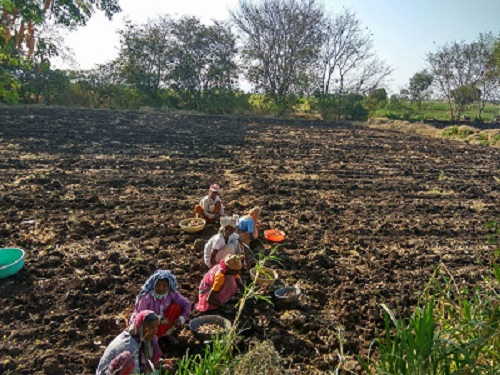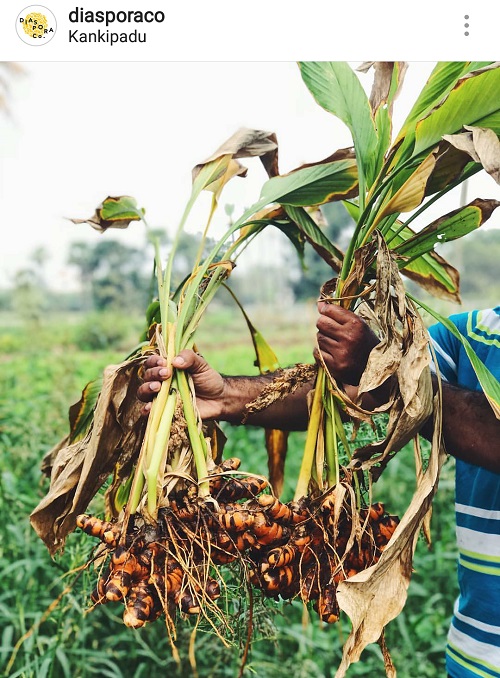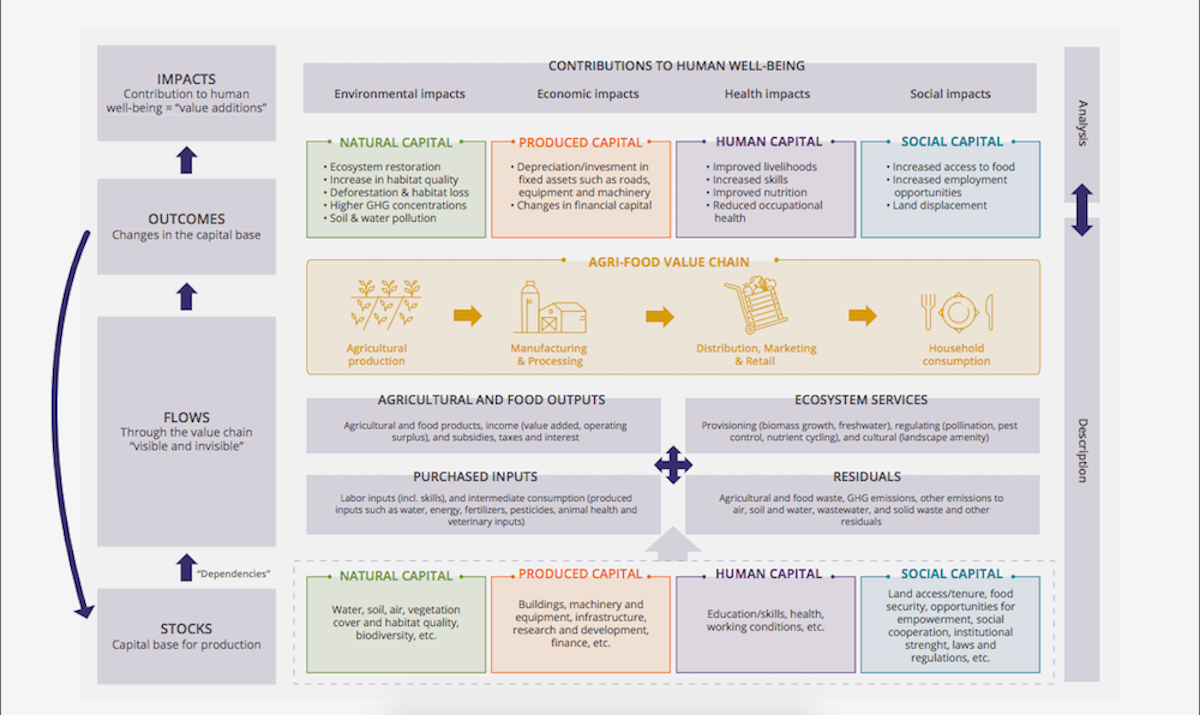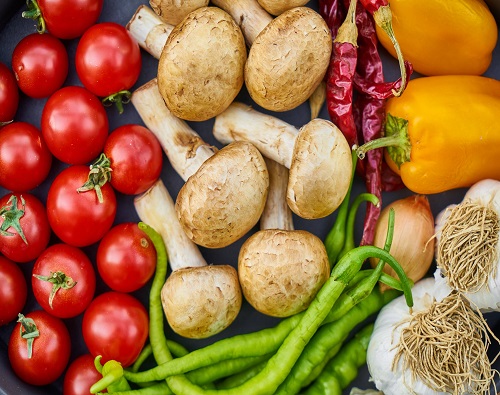An overview of the TEEBAgriFood Evaluation Framework and report findings.
As published in Eartha on July 06, 2018.
A new report offers the basis for a major shift in evaluating the visible and hidden costs and benefits of our agriculture and food systems, and suggests improved ways to grow, process, distribute, and consume food, and manage food waste.
In their 2016 article, Fix Food Metrics, Pavan Sukhdev (UN Environment), Peter May (Professor of development, agriculture and society at the Federal Rural University of Rio de Janeiro) and Alexander Müller (Thinktank for Sustainability) describe that a sustainable food system must have three key attributes: it must provide health and nutrition across income levels; avoid ecological and environmental damage, and provide equitable access to natural resources, technical and financial support for smallholder farmers. Health, nutrition, environment, ecology, and livelihood – to say that our food and agriculture systems are complex, seems like an understatement.
Here is the thing: before we get down to mastering sustainability, the catch-all phrase that we use to describe anything we do to address the smallest aspects of these attributes, we have to understand our actions have bigger consequences. Thinking beyond the plate is not just about conjuring up an image of the source. It’s about considering the resources that went into producing our food, their viability, the nutritional value of it and its impact on our health. It’s about considering the livelihood of the people involved in making and delivering this food, and how they thrive. Published in 2016, Fix Food Metrics emphasised the need to make these links visible, to look at the true cost of our food. It proposed a framework to evaluate our agri-food systems factoring in everything they constitute.
Two years later, on World Environment Day 2018, UN Environment and the Government of India launched the TEEB for Agriculture & Food: Scientific and Economic Foundations Report.
Led by Alexander Müller, 150 leading experts in the fields of health, food, agriculture, and ecosystem economics from 33 countries, came together “to deliver a strong and urgent message to the global community on the need for a transformation of our agriculture and food systems that is sustainable, equitable, and healthy”. (3)
This report aims to highlight issues with our current view of the agriculture and food sectors, and our failure to make necessary connections between biodiversity loss, human well-being and the value of ecosystem services. The report also presents a TEEBAgriFood Evaluation Framework to evaluate our systems and identify critical areas that need change.
In a Q&A format, we highlight key recommendations of the report and provide an overview of the evaluation framework. But first…
What is TEEB?
The Economics of Ecosystems and Biodiversity (TEEB) was formed as a result of a meeting in 2007 in Potsdam, Germany, where environment ministers from G8+5 countries decided that it was important to analyse the economics behind biodiversity conservation and loss. The aim was to highlight that environmental damage has many invisible factors, which, when studied through the lens of “economics, ethics, social context, ecology and geography,”, would give us a deeper understanding of the impact and what we need to do to save the planet. With this focus in mind, TEEB aims to provide the knowledge to bridge the gap between biodiversity and ecosystem management on the one hand, and policymaking on the other.
Previous TEEB studies focused on the importance of biodiversity with respect to the agricultural landscape and our production and consumption of food. TEEB for Agriculture and Food (TEEBAgriFood) was launched in October 2016. Its mission is to provide a comprehensive economic evaluation of the eco-agri-food systems’ complex, and demonstrate that the economic environment in which farmers operate is distorted by significant externalities, both negative and positive, and a lack of awareness of dependency on natural, social, human and produced capitals. (1)

What are Externalities and why should they be analysed while looking at our food system?
“Externalities are defined as the third-party costs (or benefits) of bilateral economic transactions whose counterparties have not accounted for these costs (or benefits) when undertaking their transaction.” (2)
As the report highlights, we can look at our agriculture and food systems from different perspectives: from that of an agronomist, environmentalist, sociologist, economist, or health specialist. But within these views are differing opinions that complicate our understanding of the system in totality. For example, the agronomist is concerned with producing enough food for the growing population of the world and will take necessary steps to address it. An externality with such measures is the accompanying damage to human health and the ecology. “The remarkable gains in yields of the past were accompanied by degradation of natural resources and pollution of water, air and food by chemical agricultural inputs”, the report points out.
A sustainable food system must provide health and nutrition across income levels; avoid ecological and environmental damage, and provide equitable access to natural resources, technical and financial support for smallholder farmers.- Fix Food Metrics
Similarly, if we consider the economist’s perspective, the aim would be to work towards affordable food and producing more with the cheapest possible resources. “Cheap’ is the basic food policy mantra in most countries, with institutions maintaining this as the top most priority through complex manipulations of price mechanisms, trade rules and taxes.“ (2)
But a consequence of this is the downward pressure on the person who is actually producing this food: the farmer. How does a system work if at the end of the day farmers are unable to make a living from agriculture? Also, compromise on food quality is another consequence of using cheap resources to manufacture food.
These are just two examples. However, when we start looking at the entire system in this manner considering externalities and various other unintended consequences, we might be able to come up with better policies that help everyone involved in the system.
Why is it essential to view our food system through such an approach?
Our current approach of viewing our food system is what the report terms a “silo” approach, where we see the consequences and changes within a single sector. For example, we measure agricultural productivity based on yield per hectare, or we measure resource management based on water consumption. But these estimates do not give us the broader picture of sustainability. We might be able to look at calorie consumption and the impact on health, but this will not tell us anything about environmental damage. TEEB emphasises that we have to start looking at our system in value chains, not in silos. The report introduces the term “eco-agri-food systems” to capture the vast, complex interplay between,”agricultural lands, pastures, inland fisheries, labour, infrastructure, technology, policies, culture, traditions, and institutions (including markets) that are variously involved in growing, processing, distributing and consuming food.” (2)
An example of such a system is provided in Fix Food Metrics. When TEEBAgriFood studied different maize production systems – industrial, organic and traditional, to look at their impact on biodiversity and human health, they found that increased production of maize through industrial methods has an impact on the increased use of maize-based sweeteners in soft drinks. This, in turn, is a significant contributor to the increase of chronic diseases like obesity and diabetes, and therefore increase in global healthcare costs.

Food prices don’t tell the truth
“Very often cheap food is very expensive once you consider all the consequences,“ Alexander Müller said in an interview with Food Tank about the TEEB report. “The current food system produces a lot of externalities, and a lot of the costs do not show up in agriculture production. But they show up in human consumption because of the high costs for food-related diseases,” he elaborated.
Consider this fact: “agriculture, forestry and fisheries are the largest drivers of 60% of biodiversity loss.” If we factor in the climatic impact of cheap food manufactured through large chemical inputs as well as extensive use of monocultures, would our food still be as cheap?
If we are looking at the hidden costs, we also need to consider the hidden benefits of our eco-agri-food systems to make sure we continue to encourage them. Pollination services, for instance, contribute to the overall yield, but are never factored in, and yields are expressed without this input which is naturally available. Another benefit of agriculture is that it generates employment for 1.5 billion people, a scale of employment that we just cannot recreate in any other sector.
How Much Does The Food We Eat Really Cost?On the @TEEBAgriFood Evaluation Framework and the true cost of our food. Click To TweetNot only do these hidden costs and benefits have an effect on our understanding of the eco-agri-food systems, it also affects our attitude towards food, and therefore the issue of food waste. “The consideration of food as a cheap commodity prevails: disposing is cheaper than reusing food in industrialised food chains and food wastage proportions continue to grow in parallel to increasing production and consumption (at least one third of the 3070 kcal/ person/ day estimated for the 2050 population.” [Alexandratos and Bruisma 2012]).” (2)
All these facts prove that we need a better lens to look at our systems, and see the hidden links beneath the surface. The TEEB AgriFood Evaluation Framework suggested in the report provides the kind of tool we need to study the factors that drive our eco-agri-food systems and take necessary action where needed.
The Framework analyses the hidden costs/ benefits through the entire eco-agri-food chain value, including aspects of production and consumption. When measuring aspects of human wellbeing, not all analysis can be expressed in terms of monetary gains, but in qualitative or non-monetary terms.
Key elements of the framework include:
1. Stocks: In order to assess the quality and quantity of stocks that support our system and how they change over time, the framework suggests looking at the capital base of the entire system. This includes produced capital, natural capital, social capital and human capital. Produced capital refers to all manufactured items such as machinery, buildings and even intellectual capital in the form of softwares and patents.
Natural capital refers to the natural resources, including “naturally occurring living and non-living components of the Earth, that in combination constitute the biophysical environment.” (1) Biodiversity is a key aspect of this capital.
Social capital refers to the values and networks that facilitate cooperation among people, food security as well as institutional strength.
Human capital refers to the competencies, skill levels and the inherent knowledge, including health as knowledge and skills, are affected by poor human health conditions.
2. Flows through the value chain of the agri-food system impacts human well-being and include: agricultural and food outputs, purchased inputs, ecosystem services, and residuals which comprise of agricultural and food waste, greenhouse gas emissions, other emissions in the air, soil, and water, wastewater, and solid waste.
3. Outcomes which are reflected as changes in the extent or condition of the stocks of capital due to value-chain activities and manifested as changes in the four types of capital. These changes may be positive, i.e. increases in the stock of capital, or negative.
4. Contributions to human well-being: These include positive or negative effects on human well-being through an environmental, social, health or economic perspective.
To better understand how this framework helps assess an eco-agri-food system activity, consider the following scenarios:
An example of a flow is the input of pesticides on the farmland. An outcome of this action is the occurrence of ailments from pesticide poisoning, and the resulting impact would be an increase in healthcare costs. Another example is providing subsidies on farm equipments. An outcome of this flow would be more investment in agricultural machinery, which would lead to the impact of improved productivity and income. (2)

How does this report impact me, the consumer?
If you are reading all this and wondering, ‘Well, this looks great, but shouldn’t economists, policymakers and industry personnel worry about this information? Why should I understand the importance of this report and its findings?’, then you might want to revisit the definition of eco-agri-food systems. The framework only works if we support and participate where needed, and only when such comprehensive evaluation tools are used, can we take the right kind of decisions for our food systems.
When applied, the TEEB Report framework benefits different groups in the food value chain. It could help farmers develop more sustainable ways of managing their farms and focus on their role in this system beyond that of simply producing food, for instance, by preserving traditional knowledge. In the case of business owners in the agriculture and food sectors, the framework will make them more aware of the environmental and social aspects of their business decisions.
As for consumers, supporting farms and businesses which pay attention to these details will definitely go a long way in making such frameworks essential to our food systems. Consider coffee ventures like Black Baza Coffee and Wild Kaapi, for example. The teams behind these ventures assess coffee farms not just for the product, but also for the measures they take to preserve wildlife biodiversity and natural resources in and around the farms. But unless consumers actively choose these products, their behind-the-scenes impact cannot be sustained. Yes, they are more expensive than our regular coffees, but this is where the hidden cost of cheap food becomes a major point of consideration.
Also, such reports make us aware that we need to know the story behind the food products we purchase or the farms and brands we support. Many of us have opportunities to buy produce from local farmers, which means we have access to information about their farming practices and the values they are committed to. As consumers, we also need to pay more attention to food labels not just for their nutritional information, but also to understand the company’s commitments.
As Müller pointed out in his interview, it might be inconvenient for us consumers to look at the true cost of our food, but it is high time we comprehend the value of our food in a holistic way. While we enjoy the so-called benefits of cheap food, let us not forget that our planet is paying a large price for the same.
References:
1) TEEB (2018). TEEB for Agriculture & Food: Scientific and Economic Foundations. Geneva: UN Environment.
2) TEEB (2018). Measuring what matters in agriculture and food systems: a synthesis of the results and recommendations of TEEB for Agriculture and Food’s Scientific and Economic Foundations report. Geneva: UN Environment.
3) TEEB for Agriculture & Food: Scientific and Economic Foundations Report Promotional Tool Kit.
4) Pavan Sukhdev, Peter May and Alexander Müller, Fix Food Metrics, Nature 540, 33–34 (01 December 2016)
Featured Image Courtesy Engin Akyurt; Pexels.
You May Also Like
